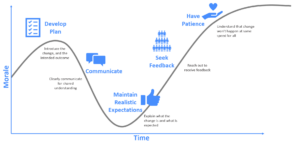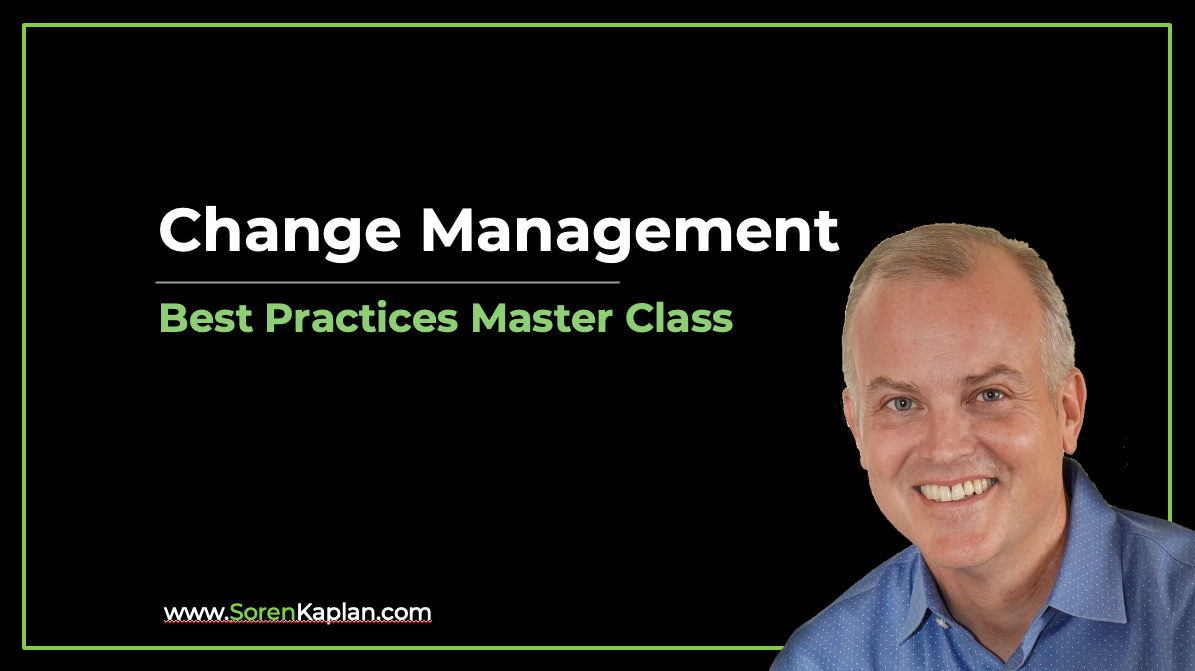What is the Change Fatigue Model?
The Change Fatigue Model explains how poor communication and excessive change can lead to employee burnout, frustration, and disengagement. When organizations introduce multiple overlapping or poorly executed change initiatives, employees may feel overwhelmed, leading to resistance, low morale, and reduced productivity.
Change fatigue occurs when employees experience constant shifts in priorities, unrealistic expectations, and an unclear vision, making it difficult to stay engaged. Organizations that fail to manage change effectively risk losing talent, lowering operational efficiency, and increasing resistance to future transformation efforts.
This model helps organizations recognize the warning signs of fatigue, implement strategies to pace transformations, and ensure that change initiatives are clearly defined, properly communicated, and strategically managed. By addressing change fatigue, businesses can create a more resilient workforce, maintain employee engagement, and improve the success rate of long-term transformations.
Change Fatigue Model in Change Management
Understanding and addressing change fatigue is essential for maintaining employee well-being and organizational success. The Change Fatigue Model helps organizations:
- Recognize Early Warning Signs – Identify symptoms such as low engagement, skepticism, and emotional exhaustion.
- Improve Communication Strategies – Deliver clear, transparent, and consistent messaging around change efforts.
- Pace Transformations Effectively – Avoid overwhelming employees with excessive or poorly timed initiatives.
- Enhance Employee Resilience – Provide support structures that help employees navigate change successfully.
By integrating this model into change management strategies, organizations can reduce burnout, improve adaptability, and foster a culture that embraces change rather than resists it.
Getting Started with the Change Fatigue Model
To mitigate change fatigue, organizations should follow a structured approach that prioritizes clear communication, realistic expectations, and employee well-being. Below is a step-by-step guide to implementing this model.
1. Identify Signs of Change Fatigue
Before addressing change fatigue, organizations must recognize its symptoms. Common warning signs include:
- Decreased employee engagement and enthusiasm for new initiatives.
- Higher absenteeism, stress, and burnout-related complaints.
- Increased resistance to change and skepticism toward leadership.
- Frequent confusion due to conflicting messages or shifting priorities.
2. Assess the Pace and Volume of Change
Organizations must evaluate how change initiatives are being introduced to determine if they are manageable. This includes:
- Reviewing the number of active change initiatives and their impact on employees.
- Ensuring that each change has a clear purpose, structured plan, and defined outcomes.
- Gathering feedback from employees to understand their capacity to absorb and adapt to change.
- Avoiding unnecessary or redundant initiatives that add complexity without value.
3. Improve Communication and Transparency
Poor communication is a leading contributor to change fatigue. To prevent information overload and confusion:
- Establish a centralized communication strategy to provide consistent messaging.
- Use simple and clear language to explain why changes are happening and how they benefit employees.
- Provide frequent updates on change progress, addressing employee concerns proactively.
- Encourage two-way communication through Q&A sessions, surveys, and leadership accessibility.
4. Set Realistic Expectations and Manage Workload
Employees struggling with multiple change initiatives often experience excessive workloads. To manage expectations:
- Space out change initiatives to prevent overwhelming employees with simultaneous transitions.
- Ensure that timelines are realistic and allow for adjustment based on employee feedback.
- Prioritize changes that deliver the most value while minimizing disruption.
- Reduce unnecessary meetings, bureaucracy, and additional responsibilities during peak transition periods.
5. Provide Support and Resources
Organizations must offer tools and support systems that help employees manage stress and adapt successfully. This includes:
- Providing training and coaching programs tailored to specific change initiatives.
- Creating employee wellness programs to address stress and burnout.
- Offering mental health support through counseling, HR initiatives, or internal peer groups.
- Recognizing and rewarding adaptability by celebrating employees who successfully navigate change.
6. Monitor Change Impact and Adjust as Needed
Change management should be an iterative process where organizations assess impact and refine strategies based on employee feedback. This involves:
- Conducting regular check-ins and pulse surveys to measure morale and engagement.
- Adjusting change initiatives based on real-time feedback and resistance levels.
- Ensuring that leadership remains responsive and adaptable to employee concerns.
- Promoting a culture of continuous improvement where lessons from past changes are applied to future initiatives.
Lead Successful Change Management Projects!

Project Recommendations for Success
Lack of Employee Engagement
Ensure employees feel heard, supported, and involved throughout change initiatives.
- Establish forums for employees to share concerns and offer suggestions.
- Assign change champions within teams to advocate for employees’ perspectives.
- Offer incentives and recognition programs for employees who actively support change efforts.
Poor Communication and Conflicting Messages
Develop a structured communication plan to maintain consistency and clarity.
- Use storytelling techniques to make change initiatives more relatable and compelling.
- Provide visual aids such as infographics, videos, or dashboards for better understanding.
- Ensure leadership is aligned and delivering uniform messaging across all levels.
Overloading Employees with Too Many Changes
Balance transformation efforts by pacing initiatives and prioritizing the most critical ones.
- Conduct an audit of ongoing and planned change initiatives to assess impact.
- Implement a staggered rollout approach to allow employees to adjust gradually.
- Consider employee workload when determining implementation timelines.
Ignoring Employee Burnout and Well-Being
Proactively support employees to prevent exhaustion and disengagement.
- Offer flexible work arrangements during high-change periods.
- Incorporate wellness initiatives such as mindfulness training and mental health days.
- Encourage managers to regularly check in with employees about workload concerns.
Complementary Tools & Templates for Success
- Change Impact Assessment Tool – Helps measure employee readiness and workload capacity.
- Communication Plan Template – Ensures messaging is clear, strategic, and aligned with change initiatives.
- Employee Sentiment Survey – Gathers feedback on how employees are coping with change.
- Leadership Engagement Toolkit – Provides guidelines for managers to support employees through transitions.
Conclusion
The Change Fatigue Model is a critical framework for organizations looking to maintain employee morale and engagement during continuous transformation. By identifying warning signs, pacing change initiatives effectively, and prioritizing employee well-being, businesses can reduce burnout and ensure smoother transitions.
When organizations neglect change fatigue, they risk high turnover rates, resistance to future change, and declining productivity. A well-structured approach to managing change fatigue allows businesses to maintain a resilient workforce, improve change adoption, and foster a culture that embraces continuous improvement.
By integrating this model into their change management strategies, organizations can sustain transformation efforts without overwhelming employees, ensuring that change is both successful and sustainable. Businesses that prioritize employee well-being and engagement during transitions will be better positioned to drive innovation, enhance performance, and maintain long-term success in an evolving business landscape.
Lead Successful Change Management Projects!
